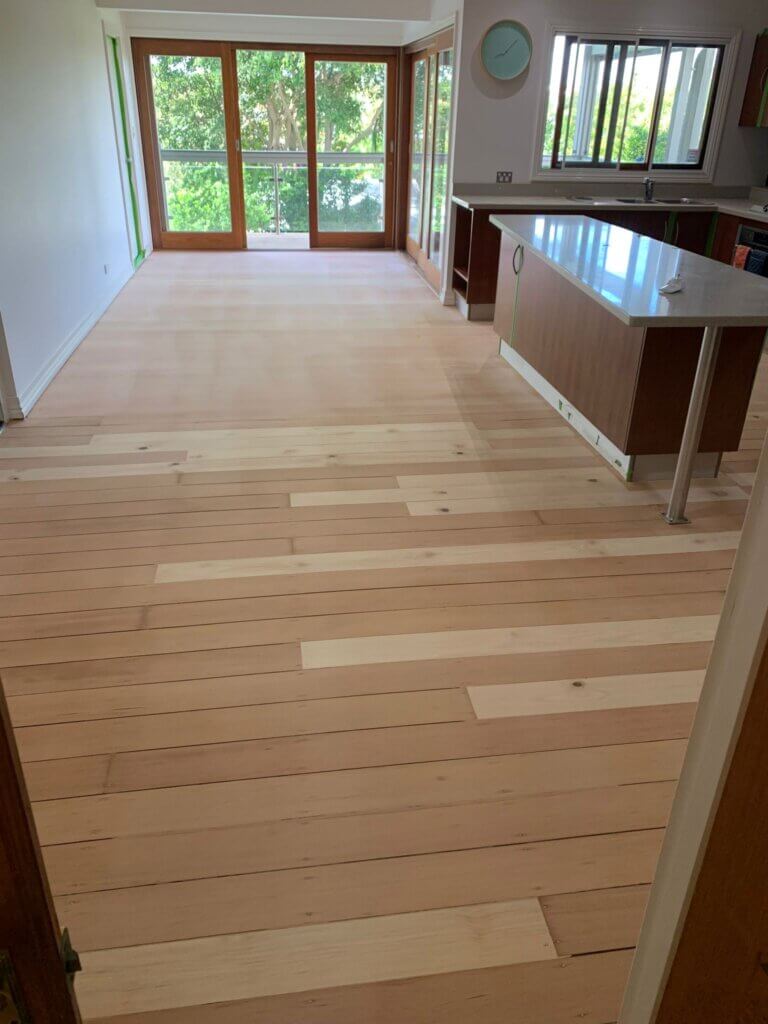Are you concerned about changing your floorboards or replacing hardwood floors? The decision is tricky and requires advice from a professional who can thoroughly inspect and give the right suggestion. Maintaining timber floors is easy but requires continuous care. Daily sweeping and floor maintenance increases the life span and cut the cost of refinishing and replacing. If you plan to install a new floor, choose the wood and contracting team wisely.
For your convenience, we bring some factors and considerations that help you decide to refinish or replace your hardwood floors.
Pinpointing Conditions Where Refinishing Your Hardwood Flooring Is Necessary
The timeless beauty of timber floors is achievable only through regular care. If you care for your floors by dedicating attention, you ensure they retain their allure for decades.
Here are the pinpoint conditions when refinishing your timber floors is vital for its endurance.
- Scratchy and warped-out floorboards
The floor gets scratched by furniture dragging and pet nails. If you observe marks of dents, shoes, dust, and girts, there is a high chance of saving the floor from further damage. Buffing the floor and polishing the area is ample to bring the luster back.
- Cracky noise from the floor while walking
Cracky noise formation is due to the loss of moisture in the floorboards. Assess the individual floorboards and fill the gaps between the boards with a good-quality filler.
- Cupping and buckling of the boards
As soon as cupping or buckling appears on the floorboards, look for any pipe leaks or changes in the humidity levels of the area. A small change is reversible by sanding the area and applying a water-resistant finish.
- Floorboard edges are infested with mold
The first visible growth of the mold is at the edges of the floorboards. Improper cleaning and high moisture favor mold growth. Clean the mold with a scrapper, and floor disinfestation by a professional can save you from high expenses in the future.
- Visible fading of the floor that faces sunlight
If your timber floorboards have lost their luster due to excessive exposure to sunlight, refinishing and polishing can revive their appearance.
Assessing When It is Necessary to Replace Your Timber Flooring
- You want to invest in your house to increase its value.
Timber floor replacement is a great way to increase the value of your home. Updated timber floor enhances the aesthetic appeal, which attracts potential buyers.
- The flooring is old, and it is time to update the appearance.
If you are tired of looking at the same floor for years, replacing the floor with a new one is the way to go. Timber floors are available in many colors and varieties that you can choose from according to your desire.
- The damage is extensive, and the floor can fall apart.
If the damage (cupping, buckling, warping, etc) is out of your hands and the floor cannot withstand further sanding, it is time to replace it. Replacing the damaged floor is essential to avoid any accident or future damage.
- The wood is infested with bacteria and fungi, causing health concerns.
When a house remains vacant for an extended period, the wooden floor becomes an ideal breeding ground for mold and bacteria. Furthermore, borer infestation can cause gapping and holes in the floorboards. The infested floor is not healthy to live in. Replacing the floor is the only option left in such conditions.
Select from the finest floors with the help of the Budget Floor Sanding team to get lustrous and vibrant flooring. Our team of professionals will give the best advice regarding refinishing or replacing your floor.


